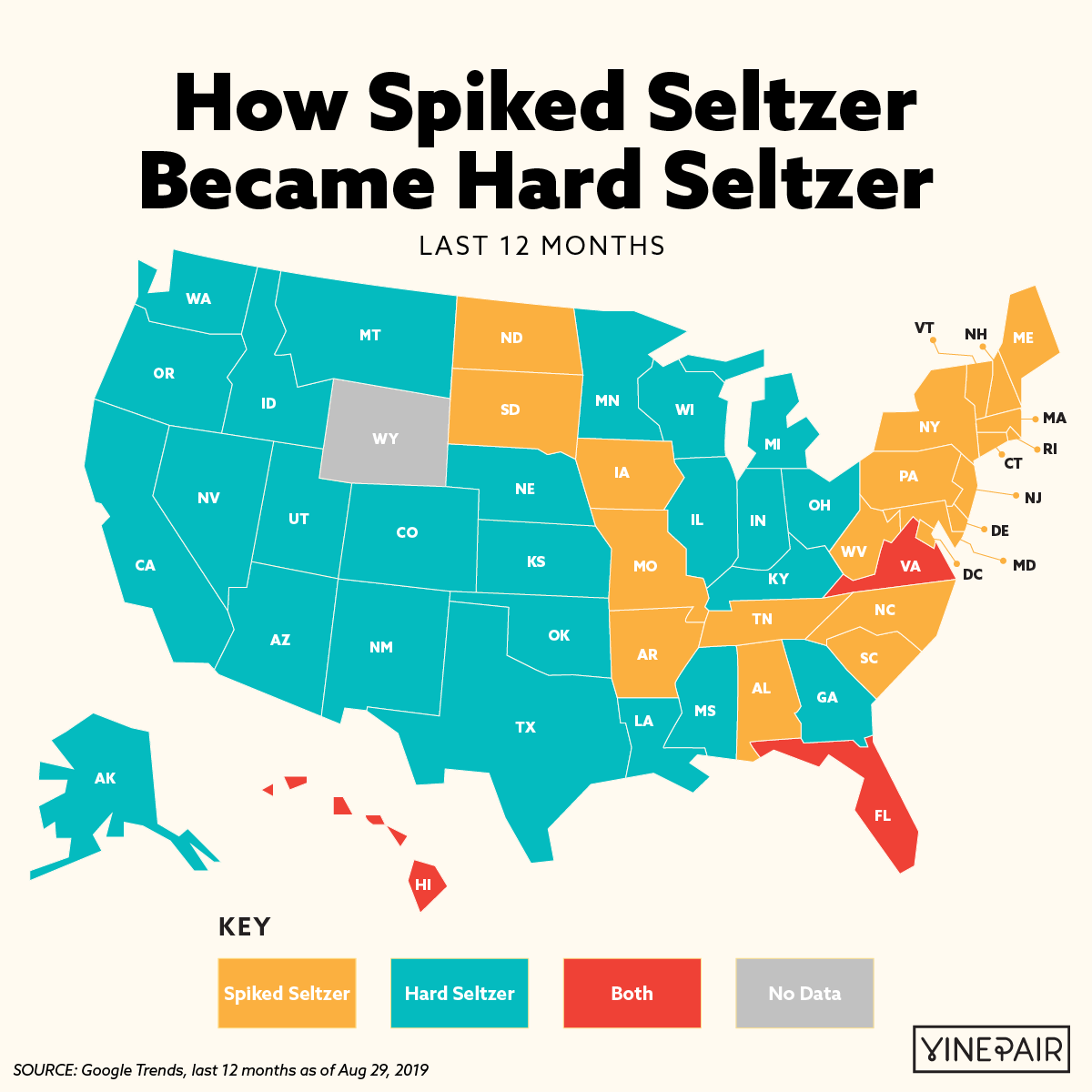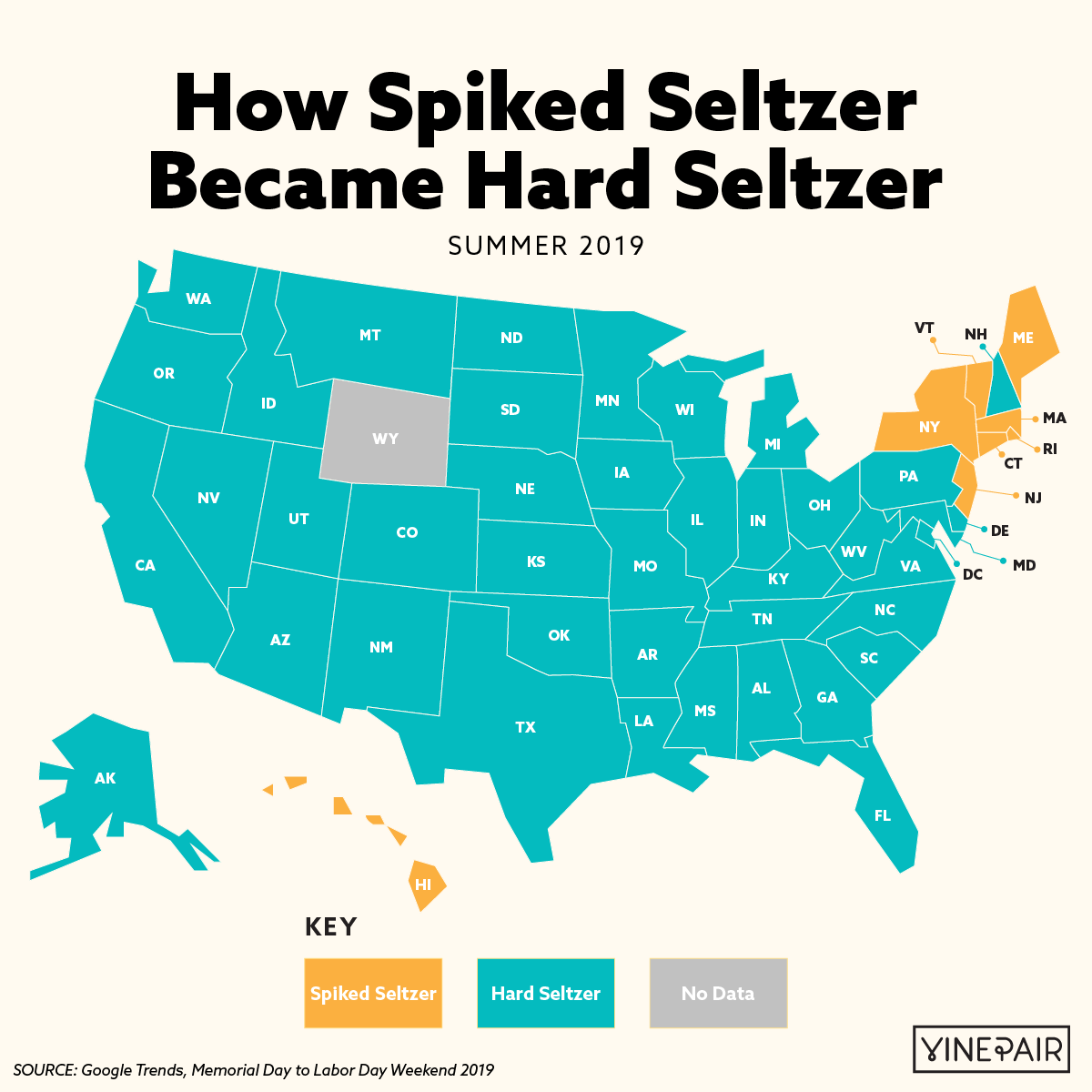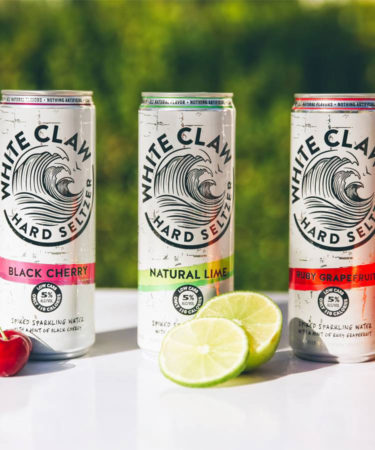How culturally pervasive is White Claw, the wildly popular flavored malt beverage (FMB)? It may have renamed its entire category.
Prior to 2019, the terms “hard seltzer” and “spiked seltzer” were fairly interchangeable. According to Google Trends data, from 2018 to 2019, America was split pretty much down the middle on what to call the stuff. Internet users in the western half the country tended to look up “hard seltzer.” The majority of those in the East and parts of the Midwest and Mountain West typed “spiked seltzer” into their search bar.

By summer 2019, however, if our internet habits are any indication, the vast majority of the country started calling the category “hard seltzer.” We can’t prove search trends are exclusively White Claw’s influence, but there’s solid support for such a claim. Because, well, White Claw is shockingly successful. Sales increased 320 percent from May 2018 to May 2019, according to Nielsen, and in July 2019, bars reportedly couldn’t keep it in stock.
Meanwhile, the brand has entered the cultural zeitgeist in that intangible “pass the Kleenex” instead of “tissue” sort of way. After all, no other hard or spiked seltzer is inspiring think pieces in The Atlantic, or being called “the drink of the summer” by GQ.
The seven northeastern states still searching for “spiked seltzer” might be a result of regional proximity to another FMB and White Claw competitor, Truly. A subsidiary of the Boston Beer Company, Truly launched in 2016 as “Truly Spiked and Sparkling.” Now, the company self-identifies as Truly Hard Seltzer.
To find out if your state is living hard or staying spiked, check out the summer 2019 map.

